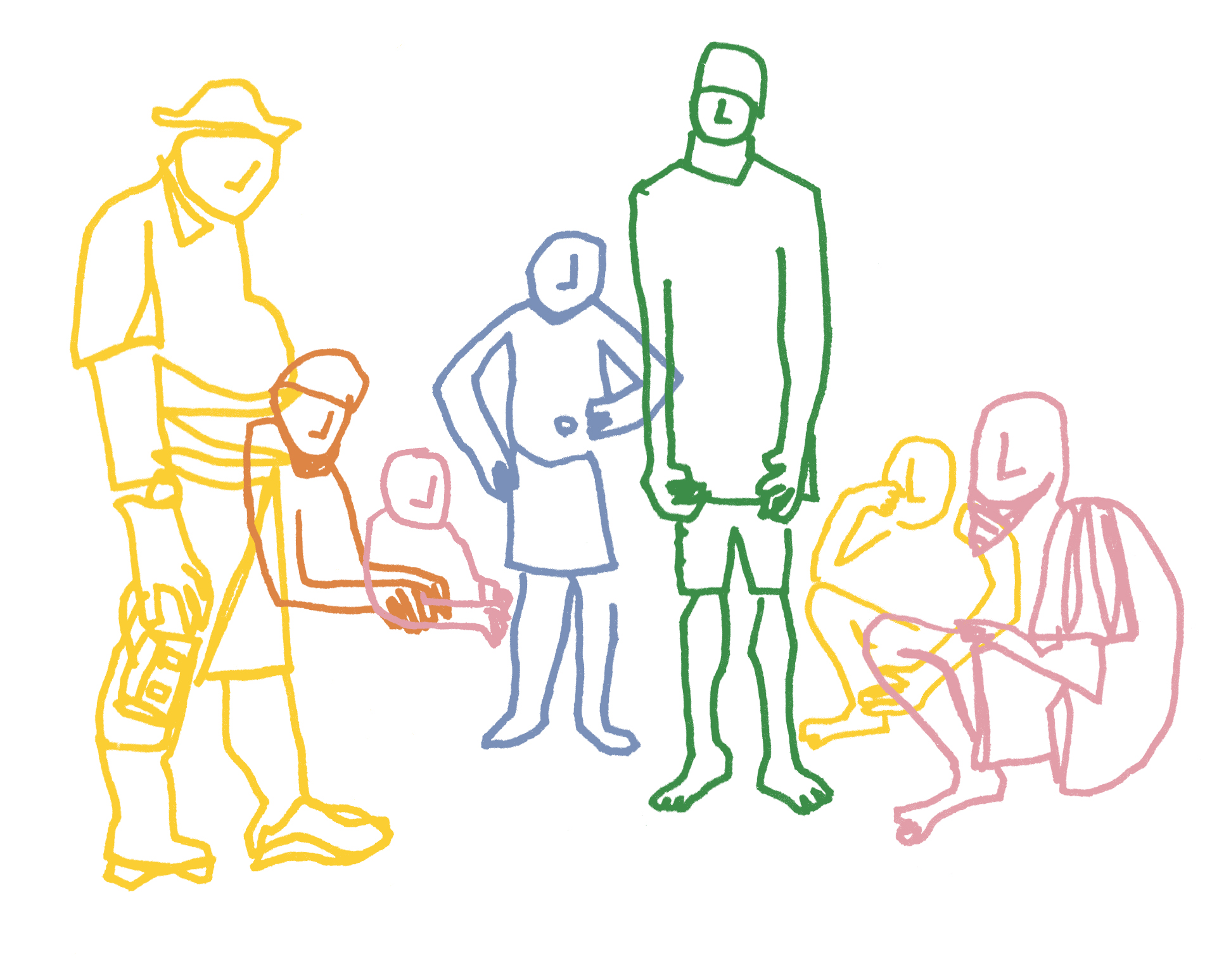
Mark Addison Smith. Hand-rendered design possibility for the digital publication presented in Mood Boards + Design Experiments for Mapping Senufo. 31 January 2020.
A long-term collaborative project benefits from an ever-expanding list of colleagues and institutions. Special thanks to the Emory Center for Digital Scholarship and the Emory College Digital Publishing in the Humanities initiative based at the Fox Center for Humanistic Inquiry as well as to the Andrew W. Mellon Foundation, the Clark Art Institute Research and Academic Program, Getty Research Institute, the National Endowment for the Humanities, and the Samuel H. Kress Foundation. Additional thanks to the Emory Center for Faculty Development and Excellence, the Emory College Program to Enhance Research and Scholarship (PERS) and the Emory University Research Committee (URC).
For access to important archival material, we thank many individuals and institutions, including the Archives nationales d’outre-mer in Aix-en-Provence, France; médiathèque André Malraux in Strasbourg, France; Metropolitan Museum of Art in New York, USA; Musée africain in Lyon, France; Musée des civilisations de Côte d’Ivoire in Abidjan, Côte d’Ivoire; Musée du quai Branly in Paris, France; Société des missions africaines in Strasbourg, France; and Société des missions africaines in Rome, Italy.
And thanks, too, to the many people who have provided feedback, shared insights, or supplied other critical information and support, including participants at the Kress Summer Institute on Digital Mapping and Art History at Middlebury College in August 2014; the From Prototype to Published KairosCamp, an Institute for Advanced Topics in the Digital Humanities funded by the National Endowment for the Humanities and hosted by the Digital Publishing Institute at West Virginia University in June 2018; the Clark Art Institute Research and Academic Program in the fall of 2019; the Camargo Foundation in the spring of 2020; and Getty Scholars Program during the 2023–24 academic year. We extend additional big thanks to many other people, including Greg Albers, Gabriel Almeida Baroja, Cheryl Ball, Nicholas Bauch, Sammy Bennis, Bailey Betik, Yaëlle Biro, Ken Cohen, Meredith Cohen, Herbert Cole, Nicole Coleman, Michael Elliott, Silvia Forni, Till Förster, Ann Gagliardi, Jane Gagliardi, Marcia Gagliardi, Peter Gagliardi, Joanna Gardner-Huggett, Anita Glaze, Manuela Husemann, Paul Jaskot, S. Wright Kennedy, Melanie T. Kowalski, Daniel Krasner, Emily McGinn, Megan McNamee, Noëleen Murray, Steven Nelson, Marcus Neustetter, Emily Pugh, Brett Pyper, Sheila Rabun, Ciraj Rassool, Gwendolynne Reid, Yael Rice, John Russell, Troy Sherman, Erik Steiner, Janet Stephens, Kristine Tanton, Daniel Thompson, Ibrahim Traoré Banakourou, Nancy Um, Amanda Wasielewski, Matthew Westerby, Stephen Whiteman, and Gabriel Wolfenstein.


Mark Addison Smith. Hand-rendered design possibility for the digital publication presented in Mood Boards + Design Experiments for Mapping Senufo. 31 January 2020.
A long-term collaborative project benefits from an ever-expanding list of colleagues and institutions. Special thanks to the Emory Center for Digital Scholarship and the Emory College Digital Publishing in the Humanities initiative based at the Fox Center for Humanistic Inquiry as well as to the Andrew W. Mellon Foundation, the Clark Art Institute Research and Academic Program, the National Endowment for the Humanities, and the Samuel H. Kress Foundation. Additional thanks to the Emory Center for Faculty Development and Excellence, the Emory College Program to Enhance Research and Scholarship (PERS) and the Emory University Research Committee (URC).
For access to important archival material, we thank many individuals and institutions, including the Archives nationales d’outre-mer in Aix-en-Provence, France; médiathèque André Malraux in Strasbourg, France; Metropolitan Museum of Art in New York, USA; Musée africain in Lyon, France; Musée des civilisations de Côte d’Ivoire in Abidjan, Côte d’Ivoire; Musée du quai Branly in Paris, France; Société des missions africaines in Strasbourg, France; and Société des missions africaines in Rome, Italy.
And thanks, too, to the many people who have provided feedback, shared insights, or supplied other critical information, including participants at the Kress Summer Institute on Digital Mapping and Art History at Middlebury College in August 2014; the From Prototype to Published KairosCamp, an Institute for Advanced Topics in the Digital Humanities funded by the National Endowment for the Humanities and hosted by the Digital Publishing Institute at West Virginia University in June 2018; the Clark Art Institute Research and Academic Program in the fall of 2019; and the Camargo Foundation in the spring of 2020. We also extend big thanks to Gabriel Almeida Baroja, Cheryl Ball, Nicholas Bauch, Sammy Bennis, Yaëlle Biro, Ken Cohen, Herbert Cole, Nicole Coleman, Michael Elliott, Till Förster, Ann Gagliardi, Marcia Gagliardi, Anita Glaze, Manuela Husemann, S. Wright Kennedy, Melanie T. Kowalski, Daniel Krasner, Emily McGinn, Noëleen Murray, Marcus Neustetter, Brett Pyper, Sheila Rabun, Ciraj Rassool, Gwendolynne Reid, John Russell, Troy Sherman, Erik Steiner, Janet Stephens, Daniel Thompson, Ibrahim Traoré Banakourou, and Gabriel Wolfenstein.

© 2020 Mapping Senufo, Emory University. All Rights Reserved.